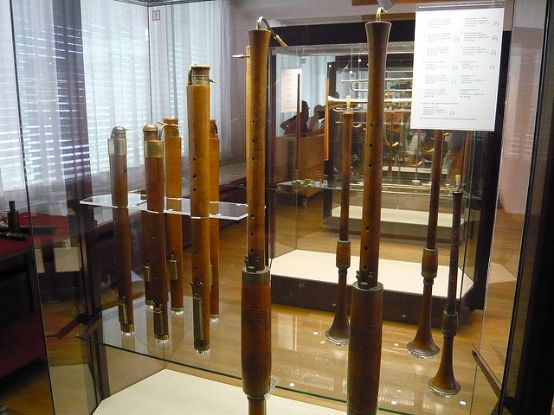The Pomeranian
Barbara Neumeier dedicates the first monograph to the predecessor of the oboe, with numerous illustrations and text sources.

There are all kinds of publications on the violin, flute and horn, and the literature dedicated to the piano is diverse. In the German-speaking world, however, there has been no monograph on the pommer and shawm, the precursors of the baroque oboe. Barbara Neumeier has filled this gap with her dissertation and thus made a respectable contribution to organology.
In order to accomplish her task, the author has initially compiled all available direct and indirect sources in a comprehensive collection of material. The collection of around fifty Pomeranian instruments in European museums, including the collection of old musical instruments in Berlin with the magnificent Pomeranian sets, double-reed instruments of different lengths, from the Wenzelskirche in Naumburg and the Marienkirche in Danzig, is impressive and is listed in tabular form on pages 32-37.
Among the auxiliary sources, Barbara Neumeier cites music theory writings by Sebastian Virdung, Martin Agricola, Michael Praetorius and Marin Mersenne from the 16th and 17th centuries, books that invariably refer in illustrations to the difference between shawms with bare finger holes and pommer with a key protected in a fontanelle. The now established databases of music-related image sources - Euterpe in Paris and RIdIM (Répertoire International d'Iconographie Musicale) have undoubtedly made the organologist's search for images of these early oboe instruments easier, as the beautiful and informative illustrations suggest.
However, the literary evidence of Chrétien de Troyes' Erec et Enide (1170) to Johann Wolfgang Goethe's Fiction and truth from the early 19th century. When describing the historical court of pipers in Frankfurt am Main, Goethe mentioned "three pipers, one of whom blows an old shawm, the other a bass, the third a pommer or hoboe", when these wind instruments had already given way to the modern oboe.
Barbara Neumeier's aim of focusing on a historical woodwind instrument and presenting the pommer as part of certain ensembles and instrumentation forms in town pipe bands and court bands has certainly been achieved with a comprehensive volume of over 400 pages.
Barbara Neumeier, The Pommer. Bauweise, Kontext, Repertoire, Saarbrücker Studien zur Musikwissenschaft, vol. 17, 436 p., € 68.00, Studiopunkt Verlag, Sinzig 2015, ISBN 978-3-89564-159-6








